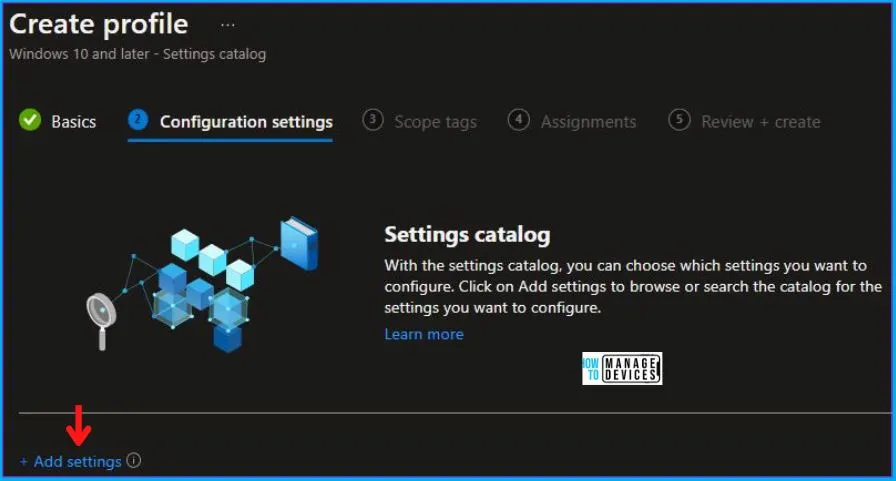This post will help in understanding and setting the Support Device Authentication Using Certificate Policy Using Intune. Here we are going to implement this policy using Intune’s Configuration Profiles. This policy’s main aspect is providing hands-on experience setting up the Support Device Authentication Using Certificate Policy Using Intune.
Support Device Authentication Using Certificate policy setting provides the option to configure support for Kerberos to attempt authentication using the device’s certificate within the domain. Enabling device authentication through certificates necessitates connectivity to a Domain Controller (DC) in the device account domain that supports certificate authentication for computer accounts.
Disabling this policy setting ensures that certificates are never utilized for authentication. In the absence of configuring this policy, the default behaviour will be “Automatic.”
If you activate this policy setting, the device’s credentials will be determined by the selected options:
- Automatic: The device will attempt authentication using its certificate. If the DC does not support computer account authentication with certificates, it will use password authentication.
- Force: The device will exclusively authenticate using its certificate. The authentication process will fail if a suitable DC supporting computer account authentication via certificates is not found.

- Turn On Virtualization Based Security Policy using Intune
- Disable Turn Off Background Refresh of Group Policy using Intune
Windows CSP Details DevicePKInitEnabled
We will see Windows CSP Details for this Policy setting DevicePKInitEnabled. Supporting device authentication through certificates requires establishing connectivity to a Domain Controller (DC) in the device account domain capable of certificate authentication for computer accounts. This policy setting offers the flexibility to define support for Kerberos, allowing attempts at authentication using the device’s certificate within the domain.
CSP URI – ./Device/Vendor/MSFT/Policy/Config/ADMX_Kerberos/DevicePKInitEnabled

Support Device Authentication Using Certificate Policy Intune
For Support Device Authentication Using Certificate Policy Using Intune, follow the steps stated below:
- Sign in to the Intune Admin Center portal https://intune.microsoft.com/.
- Select Devices > Windows > Configuration profiles > Create a profile.
In Create Profile, I select Windows 10 and later in Platform, and select Profile Type as Settings catalog. Click on the Create button.
| Platform | Profile Type |
|---|---|
| Windows 10 and later | Settings Catalog |

On the Basics tab pane, I provide a name for the policy as “Support Device Authentication Using Certificate Policy.” Optionally, if you want, you can enter a policy description and proceed by selecting “Next“.

Now in Configuration Settings, click Add Settings to browse or search the catalog for the settings I want to configure.

In the Settings Picker windows, I searched for the keyword Kerberos, I found the category Administrative Templates\System\Kerberos and selected this.
When I select that option as stated above, I see the sub-category Support device authentication using certificate. After selecting that, click the cross mark at the right-hand corner, as shown below.

When you kept the Support device authentication using certificate as Disabled, another option pops up to select which is Device authentication behavior using certiftcate: (Device) and the option to select for this is Automatic and clicked on Next to continue.

Using Scope tags, you can assign a tag to filter the profile to specific IT groups. One can add scope tags (if required) and click Next to continue. Now in Assignments, in Included Groups, you need to click on Add Groups, choose Select Groups to include one or more groups, and click Next to continue.

In the Review + Create tab, I review settings. After clicking on Create, changes are saved, and the profile is assigned.

Upon successfully creating the “Support Device Authentication Using Certificate Policy,“ notification will appear in the top right-hand corner, confirming the action. You can also verify the policy’s existence by navigating to the Configuration Profiles list, where it will be prominently displayed.
Your groups will receive your profile settings when the devices check in with the Intune service. The Policy applies to the device.
Intune Report for Support Device Authentication Using Certificate Policy
From the Intune Portal, you can view the Intune settings catalog profile report, which provides an overview of device configuration policies and deployment status.
To track the assignment of the policy, you need to select the relevant policy from the Configuration Profiles list. Reviewing the device and user check-in status lets you determine if the policy has been successfully applied. If you require more detailed information, you can click on “View Report” to access additional insights.

Intune MDM Event Log
To verify the successful implementation of String or integer policies on Windows 10 or 11 devices through Intune, you can leverage event IDs 813 and 814. These event IDs provide valuable insights into the application status of the policy as well as the specific value assigned to the policy on those devices. In the case of this particular policy, the value is a String and is linked to the event ID 814.
By analyzing these event IDs, you can gain a clear understanding of the policy’s application status and the corresponding value associated with it on the devices in question.
To confirm this, you can check the Event log path – Applications and Services Logs – Microsoft – Windows – Devicemanagement-Enterprise-Diagnostics-Provider – Admin.
MDM PolicyManager: Set policy string, Policy: (
